I took a trip to South America at Christmas a few years back and on the itinerary was Peru - Machu Picchu and Lake Titicaca.
A lot of trips to Machu Picchu start from Cusco, which is where we flew in to. Travelling to Lake Titicaca is a bit of a hike, its fair to say. Let's hear more!
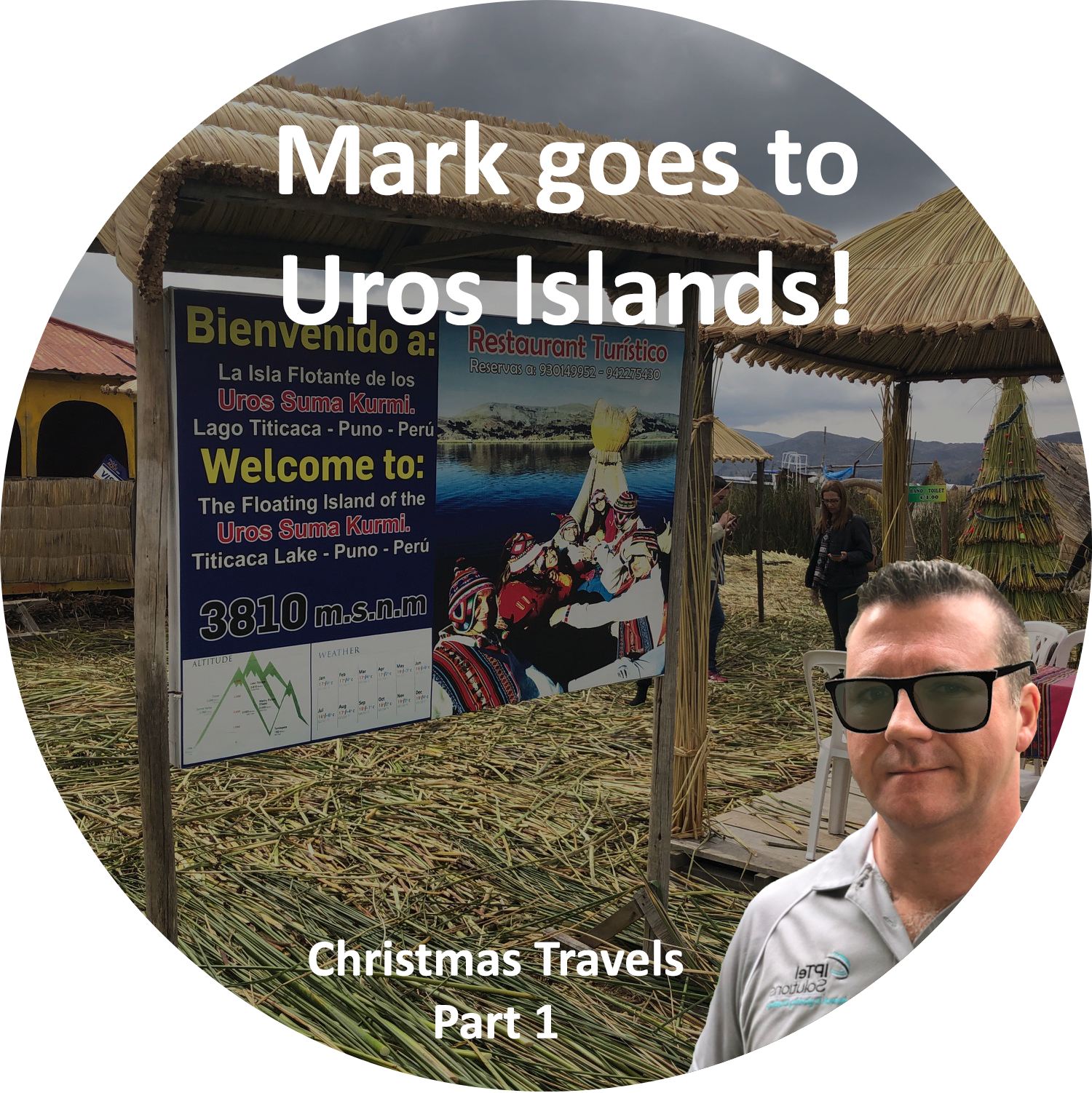
Cusco to Lake Titicaca
It's quite a long way from anywhere and although we chose the train from Cusco, (travelling at a leisurely 50km/h), its ten hours to get there.
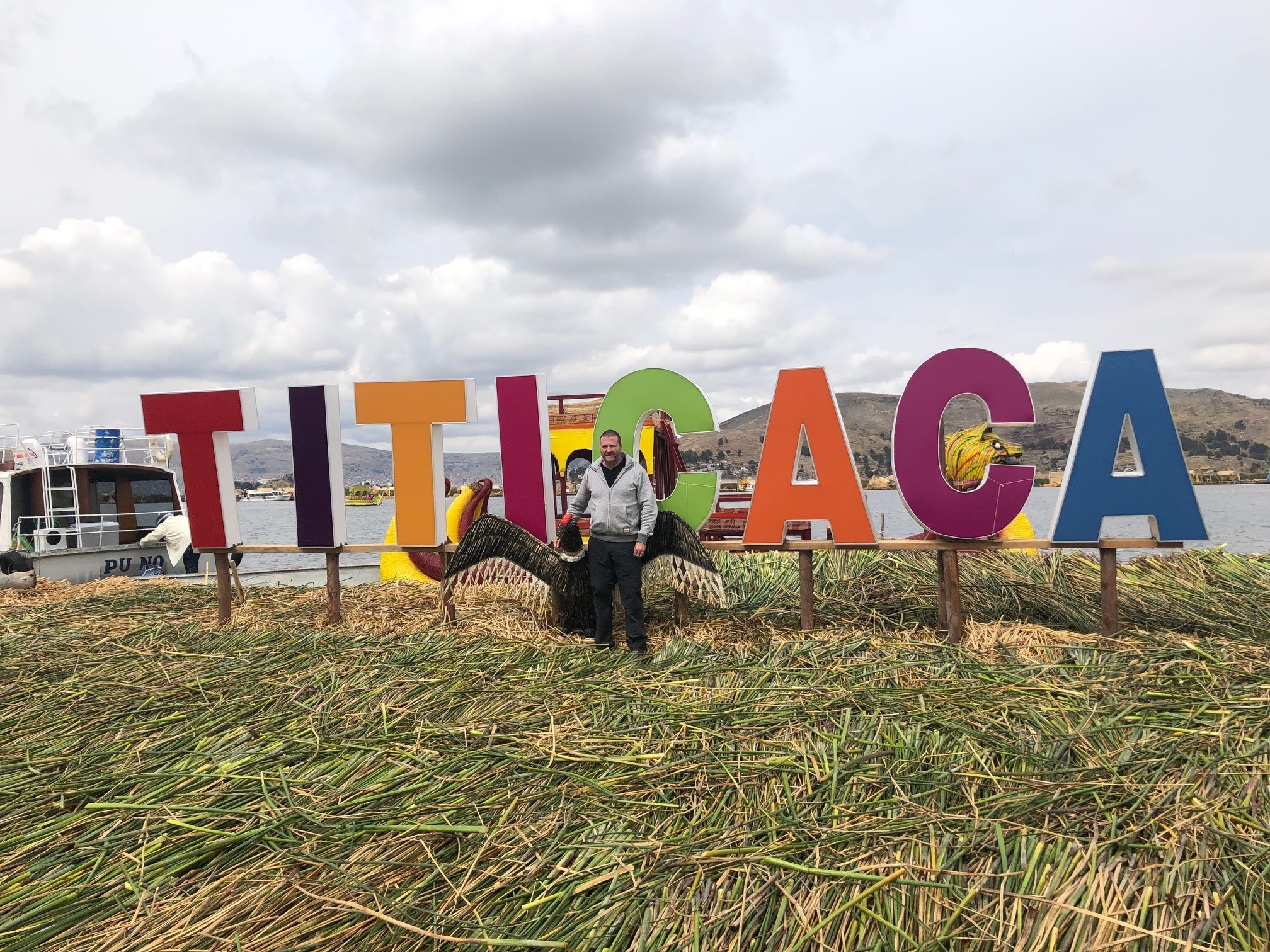 It's a great way to see some of Peru on the way though, and I'd really recommend it as a way of getting there - nice lunch and the back of the train is open, so you can enjoy the elements - recommended.
It's a great way to see some of Peru on the way though, and I'd really recommend it as a way of getting there - nice lunch and the back of the train is open, so you can enjoy the elements - recommended.
Lake Titicaca is pretty high up and you might well notice being a bit short of breath - normal activity seems fine, but try breaking out into a bit of a run, or carrying a suitcase up some stairs and you really notice it!
ASSOCIATED BLOGS:Getting to the Uros Islands
We took a boat trip out from Puno to one of the most famous aspects of Lake Titicaca, which is the floating community of the Uros Islands.
Originally, they were keeping themselves away from other tribes and took to the safety of the lake to stay out of harms way. These days though, tourism is clearly the mainstay of the islands and there's an endless array of boats and guides willing to take you out.
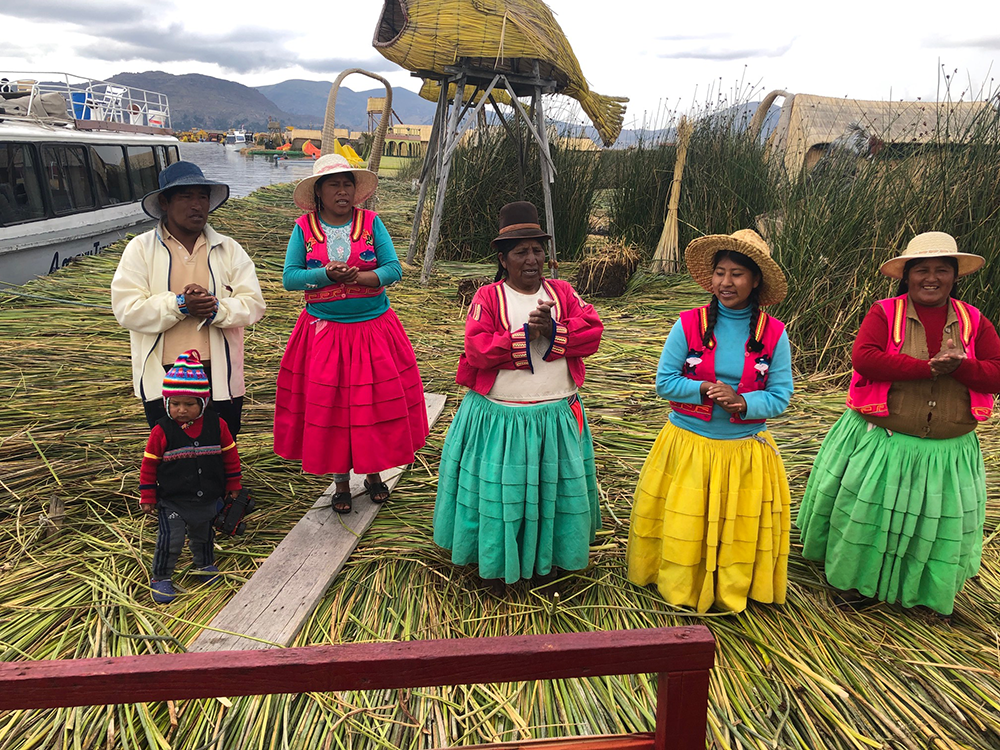
There's around 1500 people living on a range of different sized islands - some offer home stays too, for the traveller who wants to really experience the islands and spend a bit more time.
The island we visited was only maybe 8 m - 10 m wide and deep. It housed what looked like 2 - 3 families, with an appointed chief for that island.
The islands themselves are built (or were originally), from harvesting the root bed of the reeds that plentifully grow in the lake. The photo to the right shows one of the islanders showing us how they tie these together and then lay progressive layers of reeds, in alternating directions, keying them together.
ASSOCIATED BLOGS:
Culture of the Uros Islands
They told us they don't tend to harvest the reed bed any longer, just placing more and more layers of reeds on top.
When we arrived, they'd recently placed a new load, so everything was pretty green. When you onboard to the island, you can feel the compression in the reeds, which is quite a bouncy feeling - along with the slow motion from the lake, its an interesting feeling.
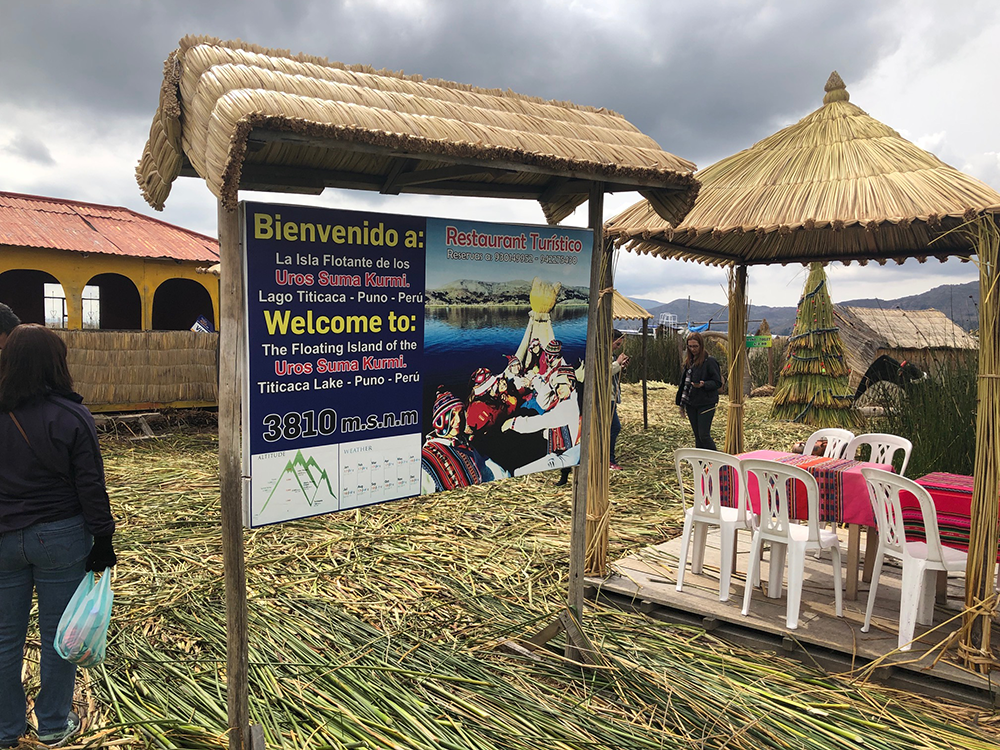
The families dress in a really colourful array of traditional wear, as you can see from the photo on the left.
Cooking was an interesting concept - they have to cook on a stone, and be careful- the guide said they could lose a whole island in 20 minutes, if fire caught hold - he said it would take an entire year to rebuild.
Dating is a particular issue for the young, and they build reed boats, which are also used for romantic goings on, allowing couples some time on their own. I asked how they shower, and they pointed at they lake - it's a cold bath when you want to wash!
ASSOCIATED BLOGS:
Capital of the Uros Islands
A quick boat trip over and we were in the capital of the Uros islands.
It had been billed as a traditional row across the lake to the capital, with two of the island inhabitants at the helm.
Half way across an outboard spluttered in to life and the boat made slightly more rapid progress across the lake, with the guys who were rowing looking a little more relaxed. Its a pretty decent sized reed boat and clearly not easy to row with a bunch of tourists on board.
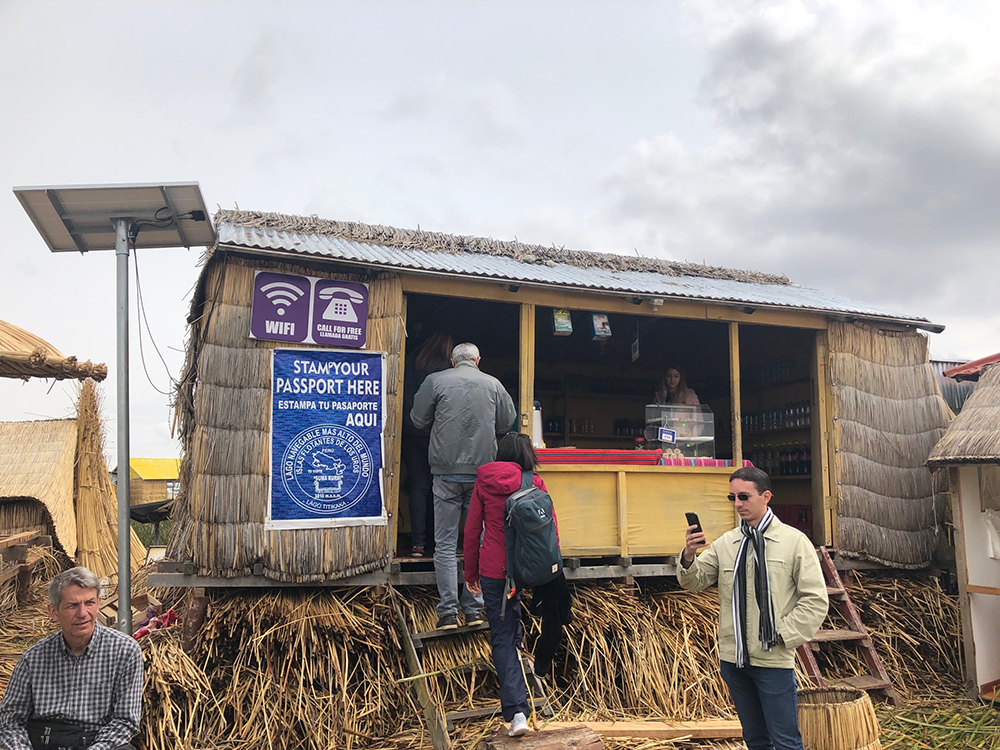
As you can see from the photo on the left , the lake is a whopping 3810m above sea level.
They had introduced a couple of other types of fish into the lake (trout being one), but found that these alien species ended up eating a lot of the smaller, native species in the lake.
This was where I noticed the sign for Wi-Fi - I thought it was pretty amazing that there we were, on an island made of reeds, on the highest lake in the world and there's Wi-Fi. Its testament to the worldwide recognition of the technology.
ASSOCIATED BLOGS:
- Travels in Silicon Valley
- Travels with Wi-Fi: In-Flight Wi-Fi
- 5 Tips for Managers
- Wi-Fi Travels in Canada
- Human Factors in Network Deployment
- How to Build Better Hotel Wi-Fi
- Teamwork - Network Installation
- The Long Road to CCIE Emeritus




).gif)
).gif)